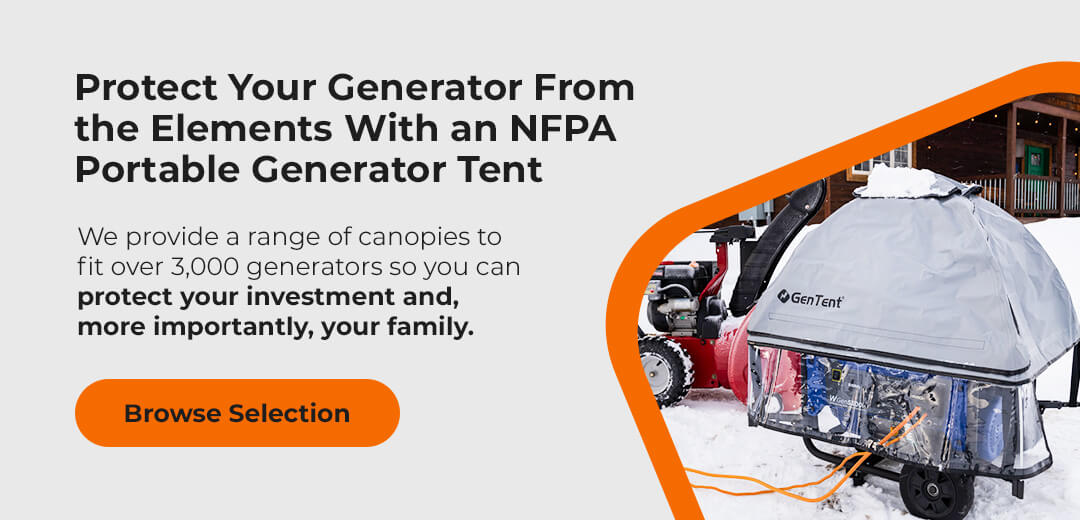
Power outages are unpredictable, but being prepared can make all the difference in maintaining the comfort and functionality of your home. In this guide, we'll discuss the benefits and process of installing a transfer switch to power your whole house with a portable generator running outside your house.
What is a Transfer Switch?
A transfer switch installation ensures a seamless transition from grid power to your outdoor portable generator setup during an outage, preventing interruptions in your home's electrical supply. By plugging your generator into your home at one connection point and throwing the switch, you can quickly and safely power most of your home's most critical appliances.
Using a transfer switch also prevents backfeeding, a situation where electricity flows from the generator back into utility lines. Backfeeding can seriously injure utility workers and can damage your appliances when your grid power is restored.
How Many Appliances a Portable Generator can Power
Your portable generator's wattage capacity will determine how many and which appliances you can power. High wattage portable generators have more load capacity to handle more appliances at the same time, but it's important not to overload your portable generator with too many appliances. Also avoid using high wattage appliances with your portable generator, like air conditioners with compressors, ovens or electric space heaters.
We recommend prioritizing essential low to moderate wattage appliances first, including your refrigerator, freezer, furnace and lights, then add less critical appliances as your portable generator's capacity allows.
Installing a Transfer Switch
While the benefits of a transfer switch are clear, the installation process requires expertise. Here's why we recommend hiring a licensed electrician in this case:
Safety Assurance:
Licensed electricians are trained to adhere to safety standards and codes, ensuring that the installation is safe for your home and the utility workers who may be restoring power in the area.
Correct Sizing and Configuration:
Electricians can accurately assess your home's electrical needs and recommend the correct transfer switch for your needs.
Code Compliance:
Local electrical codes must be followed to ensure the legality and safety of your installation. A licensed electrician is well-versed in these codes, providing peace of mind and avoiding potential legal issues.
An electrician will also typically take care of any necessary permits and inspections related to transfer switch installation.
Transfer Switch Installation Costs
The cost of installing a transfer switch varies based on factors such as the size of the switch, the complexity of the installation (such as how your panel box is configured), and labor rates in your area.
You can expect an average installation will likely take about 8 hours of labor for a licensed electrician. You can expect parts, including the switch, twist-lock inlet, conduit and wire connections, to likely cost in the low hundreds of dollars USD.
Using a Transfer Switch, Step-by-Step
Once you've lost power, it's time to restore it yourself using your new transfer switch:
Position your Portable Generator:
To avoid deadly Carbon Monoxide poisoning, position your portable generator no less than 20ft away from all buildings and dwellings. Never operate your generator in any enclosed space like a garage, shed or storage box.
Before starting your generator, connect a long, outdoor-rated extension cable from your generator to your transfer switch's inlet. You can then start your generator before switching your transfer switch to generator power.
Protect your Generator
Most power outages occur during inclement weather, such as hurricanes, snow and ice storms. Generators should never be run unprotected in wet weather conditions due to the risk of electric shocks.
Always cover your generator with an NFPA-rated running cover like GenTent to keep your electrical panels dry and allow proper airflow to your generator's motor and exhaust.
Engage your Transfer Switch
After your generator has been connected to your inlet and your generator has been started, access the subpanel for your transfer switch. Start by ensuring all of your circuits are off.
Next, throw the switch transferring power from grid to generator.
Lastly, activate your emergency circuits with your important appliances one at a time to avoid overloading your generator with too much power draw at once.
For a complete walkthrough of what it takes to own, install and run a transfer switch with your portable generator, watch this video showcasing our partners, Champion Power Equipment, and hosted by contractor Matt Risinger.
In Conclusion
Power outages are an inevitable part of life, and being prepared with a reliable backup power system can make all the difference. A complete and affordable setup includes a Portable Generator for versatile emergency and recreational power, a transfer switch to ensure quick and safe power restoration to your key appliances, and an NFPA-rated running cover like GenTent to ensure your generator will safely run no matter the weather conditions.
Choose GenTent for all your portable generator protection needs. Browse our portable generator covers and order yours today!

